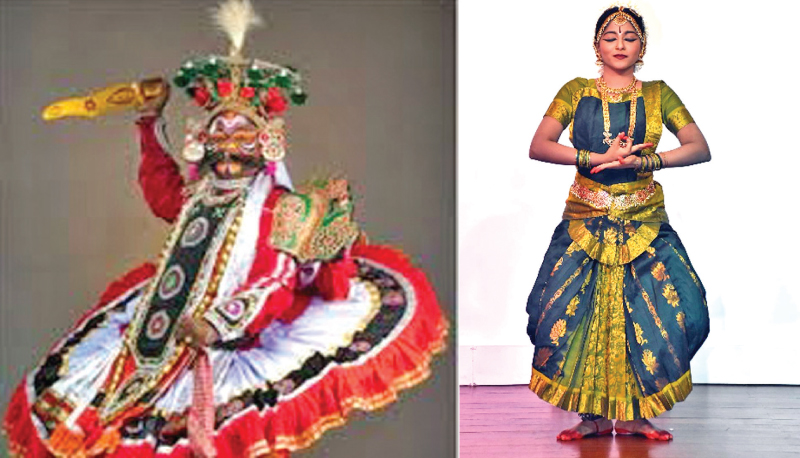Dance in ancient Tamil literature-By Dr. Subashini Pathmananthan
Source:Sundayobserver
There are five important ancient Tamil classics which are still dominating the Tamil literature world. These are Silapathikaram, Manimekalai, Civaka Cintamani, Valayapathi and Kundalakesi.
Ancient Tamils called their dances by the generic term Koothus. Silapathikaram is one of the five great classics of Tamil literature dealing with the ancient culture, literature, and life of the people of the time. It was written in the second century A.D. by Illango Adikal, the prince of the royal lineage who renounced the royal heritage and took to the robes.
In Silapathikaram the oldest Tamil epic contained, numerous references to dance, drama, and other literary work. Until the 17th century dance and drama developed together and were collectively called Koothus. The epic Illango Adikal described various types and forms of Koothus and described the nuances of different Koothu forms.
Silapathikaram describes how by the curse of Akkathiya Munivar, Urvasi and Jayanthan were born as Mathavi, the dance heroine, and Thalaikol. In Silapathikaram, its heroine Mathavi learnt the art for well over seven years, and acquired skill in dance. She possessed all the accomplishments of a dancer.
Nuances
Silapathikaram sets out the attributes of a dancer, a dance teacher, the composers of verses, the musicians including drummers, flautists and yal players and their uses are set out clearly. According to Illango Adikal, the Aasaan (the dance teacher) must know the nuances of the two varieties of Koothus: Aka Koothu and Pura Koothu.
Aka Koothu means, Vethiyal Koothu. Vethiyal Koothu was supposed to have been enjoyed by the elites. Pura Koothu is Pothuviyal Koothu which was enjoyed by the common masses. In or about the 13th century Adiyarku Nallar wrote a commentary, first ever, on Silapathikaram expressing his view that two Koothus in Silapathikaram might have been Santhi Koothu and Vinotha Koothu or two pairs of Koothus such as Vassai Koothu-Pukal Koothu; Vethiyal Koothu-Pothuviyal Koothu; Vari Koothu – Vari Santhi Koothu; Aariya Koothu-Tamil Koothu; Santhi Koothu-Vinotha Koothu; Eyalpu Koothu and Desi Koothu.
Santhi Koothu consisted of four types of dances: Chokam, Mei Koothu, Abinaya and Nadakam. Chokam includes 108 Thandava Karanas. Mei Koothu was one done by body. It consisted of three varieties; Desi, Vadaku and Singhalam Desi Koothu was the dance of Tamil country, Vadaku Koothu, was often called Marka Koothu, and was popularly regarded as the dance of the Telungu country, while Singhala was regarded as the dance of the Sinhala country.
The function of the Abinaya was to interpret the meaning by hand gestures, and Naadakam was story based dances.
Seven varieties of Koothus
The other category of Vinotha Koothu consisted of seven varieties of Koothus. Those are Kuravai Koothu, Kallai Koothu, Kuda Koothu, Karanam, Nooku, Thodpavai Koothu and Vinotha Koothu.
Commentator Adiyarku Nallar describes some other forms of Koothus: Ventri Koothu and Vassai Koothu in his commentary. Venri Koothu means the celebrations of victory over the enemy king. Vassai Koothu means mocking various images.
Another category of 11 dances by deities called Diva Viruthy was mentioned in Sillapathikaram. Another variety of Koothu form was Sakai Koothu. Sakai Koothu comprised Perapantha Koothu, Nakiyar Koothu, and Koodi Attam. Sakai Koothu and KoodiAttam still exist in Kerala, but it is difficult to believe that it is the same as it existed in Sillapathikaram.
According to Illango Adikal, the dance teacher must know the use of one hand muthras, (Asamutha Hasthas), and joint hands (Samutha Hasthas). And Illango Adikal expected that a dance teacher to know the use of grace hands, and use of working hands, which are still in use, in Bharatha Natyam.
He describes different foot work, and foot position of the dance stances, not all the positions are used in Bharatha Natyam today. But the trace of these Koothus can be seen in the folk dances of Tamil Nadu.








